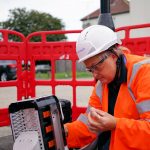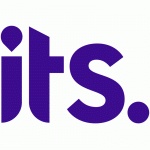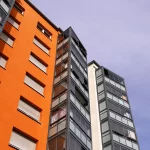BDUK Superfast Broadband Project Reveals UK Take-up for Q4 2017
The Government’s £1.6bn+ Broadband Delivery UK project has published its latest take-up data to the end of 2017 (Q4) for the state aid supported roll-out of “superfast broadband” (24Mbps+) services across the United Kingdom, which sees adoption continue to rise with many areas above 50%.
The figures inside this article reflect the percentage of customers (homes and businesses) that have chosen to sign-up with a superfast broadband network (delivered via FTTC, FTTP or Fixed Wireless), albeit only those in areas which have been upgraded through the publicly funded BDUK programme (i.e. % subscribed of premises passed).
At present this data reflects the first two phases of the programme and not any of the most recent follow-on contracts (there’s no data for those yet).
Advertisement
BDUK Phases 1 (Completed Spring 2016)
Supported by £530m of public money via the Government (mostly extracted from a small slice of the BBC TV Licence fee), as well as significant match funding from local authorities and the EU. The public funding is then roughly matched by BT’s private investment. Overall it helped to extend “superfast broadband” (24Mbps+) services to cover 90% of homes and businesses in the United Kingdom.
BDUK Phase 2 (Technically on-going)
Supported by £250m of public money via the Government, as well as match funding from local authorities, Local Growth Deals and private investment from suppliers (e.g. BT, Gigaclear, Airband, Call Flow etc.). This phase extended superfast broadband services to 95% of premises in time for the end of 2017, although some contracts are on-going until late 2018 and will reach beyond 95%.
Phase One was broadly dominated by Openreach (BT) linked contracts, while the on-going Phase Two contracts have attracted a mix of extension deals with BT and several alternative network providers, as well as some limited use of Fixed Wireless Access (FWA) technology.
Crucially the BDUK contracts include a clawback (gainshare) clause, which requires the suppliers (e.g. BT) to return part of the public investment as customer adoption of the new service passes beyond the 20% mark in related areas. The funding can then be reinvested to further improve coverage and speeds via future contracts. Efficiency savings from earlier phases can also be reinvested.
So far it looks as if a total of £737 million will be returned via both clawback (£527m) and efficiency savings (£210m), which may increase again during 2018 (details here and here). BDUK has estimated that the reinvestment could be enough to boost the UK coverage of fixed line superfast broadband from 95% today to 98% by the end of 2020. We could label this as BDUK Phase 3 but it doesn’t have a clear designation.
BDUK Phase One Take-up (Average %)
The following table breaks the take-up data down by each BDUK local authority (project area), although for the proper context these percentages should ideally be considered alongside the most recent premises passed (network coverage) data, which can be seen at the bottom of this article. Overall 44.4% of premises have adopted the new service.
Advertisement
NOTE: Some of the counties have divided their deployments into separate contracts. For example, Phase One in Shropshire doesn’t include the ‘Telford and Wrekin‘ area because that is part of a separate Phase Two contract inside the same county. On top of that the contracts were all signed at different times and so are at different stages of development.
| Project Area (BDUK Phase 1) | Uptake % (Jun 2017) | Uptake % (Sep 2017) | Update % (Dec 2017) |
| Berkshire Councils | 47.9 | 50.1 | 51.9 |
| Buckinghamshire and Hertfordshire | 48.4 | 50.8 | 53.3 |
| Cambridgeshire, Peterborough | 45.5 | 47.9 | 49.4 |
| Central Beds, Bedford Borough, Milton Keynes | 47.1 | 50.3 | 52.1 |
| Cheshire East, Cheshire West & Chester, Warrington, Halton | 45.5 | 48 | 50.1 |
| Devon & Somerset (including, Plymouth, Torbay, North Somerset, Bath & NE Somerset) | 38.3 | 41.2 | 43.7 |
| Coventry, Solihull, Warwickshire | 46.2 | 48.9 | 50.9 |
| Cumbria | 40.3 | 43.3 | 45.2 |
| Derbyshire | 37.3 | 40.1 | 42.5 |
| Dorset, Bournemouth and Poole | 38.4 | 41.6 | 43.7 |
| Durham, Gateshead, Tees Valley and Sunderland | 37.3 | 40.2 | 42.3 |
| East Riding of Yorkshire | 41.9 | 45.4 | 46.4 |
| East Sussex, Brighton and Hove | 44.2 | 47.4 | 49.7 |
| Essex, Southend-On-Sea, Thurrock | 44 | 46.9 | 48.8 |
| Greater Manchester | 32.5 | 34.3 | 36.5 |
| Hampshire | 42.7 | 45 | 47.2 |
| Herefordshire and Gloucestershire | 39 | 42.1 | 44.2 |
| Isle of Wight | 36.2 | 38.8 | 41.2 |
| Kent and Medway | 42.9 | 45.9 | 48 |
| Lancashire, Blackpool, Blackburn with Darwen | 37 | 39.4 | 41.3 |
| Leicestershire | 43.9 | 46.6 | 48.6 |
| Lincolnshire | 43.1 | 45.9 | 47.4 |
| Merseyside | 31 | 34 | 36.2 |
| Newcastle upon Tyne | 32.9 | 36.4 | 39.4 |
| Norfolk | 42.2 | 45 | 47 |
| North Lincolnshire, North East Lincolnshire | 41.8 | 44.1 | 45.9 |
| North Yorkshire | 45 | 49.1 | 49.4 |
| Northamptonshire | 47.6 | 50.1 | 52 |
| Northumberland | 44.1 | 46.9 | 48.1 |
| Nottinghamshire | 43.2 | 45.8 | 48.4 |
| Oxfordshire | 46.9 | 49.6 | 51.8 |
| Rutland | 55.6 | 58.2 | 58 |
| Shropshire | 39.6 | 42.5 | 44.8 |
| Staffordshire and Stoke-on-Trent | 39.7 | 42.2 | 44.4 |
| Suffolk | 44.4 | 46.7 | 48.8 |
| Surrey | 49.4 | 51.1 | 53.2 |
| West Sussex | 46.1 | 48.9 | 50.6 |
| West Yorkshire | 36.8 | 39.4 | 41.6 |
| Wiltshire | 45.4 | 48 | 50.2 |
| South Gloucestershire | 48 | 50.9 | 53.9 |
| Worcestershire | 43.9 | 46.6 | 48.6 |
| Devolved Administrations | |||
| Highlands and Islands | 36.8 | 39.5 | 42.1 |
| Northern Ireland | 40.9 | 43.4 | 51.1 |
| Rest of Scotland | 33.1 | 35.4 | 37 |
| Wales | 37.3 | 39 | 40.2 |
BDUK Phase Two Take-up (Average %)
So far in Phase 2 an overall total of 27% of premises have adopted the new service. Some areas also have several contracts under the Phase 2 programme and we’ve separated their % figures with a comma below. One highlight below is the inclusion of Swindon, which is showing very low take-up (3.6%) and this largely reflects the areas troubled UKBN fixed wireless network (here); it’s also a younger contract than others.
| Project Area (BDUK Phase 2) | Uptake % (Jun 2017) | Uptake % (Sep 2017) | Uptake % (Dec 2017) |
| Berkshire | no data | no data | 8.2 , 2.5 |
| Bedford & Milton Keynes | 14.9 | 20.9 | 23.9 |
| Black Country | 14.8 | 17.8 | 21.8 |
| Bucks & Herts | 20.3 | 20.9 | 17.2 |
| Cambridgeshire | no data | no data | no data |
| Cheshire | 28.9 | 34.8 | 36.2 |
| Cornwall | 22.1 | 21.9 | 21.9 |
| Cumbria | 18.3 | 18 | 20 |
| Derbyshire | 20 | 23.6 | 24.4 |
| Devon & Somerset | no data | 5.7 | 6.6 |
| Dorset | 14.1 | 13.8 | 21 |
| Durham | 17.2 | 21.4 | 22.1 |
| East Riding (Yorkshire) | 26 | 27.2 | 33.5 |
| East Sussex | 26.4 | 31.9 | 39.6 |
| Essex | 24.4 | 28.2 | 30.3 , 15.4 |
| Greater Manchester | no data | no data | no data |
| Hampshire | 23.3 | 19.3 | 24.1 |
| Herefordshire & Gloucestershire | no data | no data | 25.2 |
| Kent | 23.7 | 23.9 | 30.7 |
| Lancashire | 23.4 | 21.2 | 24.8 |
| Leicestershire | 23.7 | 24.1 | 24.4 |
| Lincolnshire | 21.2 | 24.1 | 26 |
| Norfolk | 32 | 33.7 | 35.2 |
| North Lincolnshire | 21.1 | 25.5 | 28.3 |
| North Yorkshire | 35.4 | 49 | 47.4 |
| Northamptonshire | 21 | 26.1 | 30.7 |
| Northumberland | 29.0 | 32.8 | 37.6 |
| Nottinghamshire | 28.2 | 30.1 | 31.9 |
| Oxfordshire | no data | no data | no data |
| Rutland | no data | no data | no data |
| Shropshire | no data | 9.7 | 13.7 |
| South Gloucestershire | 16.8 | 19.4 | 23.9 |
| South Yorkshire | 21.0 | 24.5 | 23.6 |
| Staffordshire | 20.7 | 20.7 | 30.6 |
| Suffolk | 31.7 | 32.3 | 35.3 |
| Swindon | no data | no data | 3.6 |
| Telford & Wrekin | 23 | 30.2 | 32.6 |
| Warwickshire | 34.9 | 37.8 | 37 |
| West Oxfordshire | no data | no data | no data |
| West Sussex | 23.9 | 26.8 | 32.7 |
| West Yorkshire | 16.5 | 20.7 | 24.4 |
| Wiltshire | 22.3 | 25.4 | 29 |
| Worcestershire | 27.5 | 33.1 | 36.1 |
| Devolved Administrations | |||
| Highlands and Islands | no data | no data | no data |
| Northern Ireland | 17.6 | 20.3 | 20.8 |
| Rest of Scotland | no data | no data | no data |
| Wales | no data | no data | no data |
IMPORTANT: Take-up is a dynamically scaled measurement, which means that at certain stages of the scheme it may go up or even down depending upon the pace of deployment (i.e. premises passed in any given time-scale), although over time the take-up should only rise.
Explained another way, earlier phases of the roll-out were easier and faster to deploy, so you could expect to see a bit of a yo-yo movement with the take-up % sometimes falling if lots of new areas were suddenly covered. Some contracts are also younger than others and will thus take time to catch-up. However BDUK’s roll-out pace is slowing as it reaches tricky rural areas (Phase 2), which will give take-up a chance to climb.
Advertisement
A number of other factors can also impact take-up, such as the higher prices for related “fibre” services, as well as customers being locked into long contracts with their existing ISP (they can’t upgrade immediately) and a lack of general awareness (locals don’t always know that the faster service exists) or interest in the new connectivity (if you have a decent ADSL2+ speed and only basic needs then you might feel less inclined to upgrade).
The fear of switching to a different ISP may also obstruct some services. In other cases the new service may run out of capacity (i.e. demand is higher than expected), which means that people who want to upgrade are prevented from doing so until Openreach resolves the problem, although the scale of this issue is fairly small.
Now, for some context, here’s the latest progress report on related contracts for the same period.
Funding and Premises Passed Progress (BDUK Phase 1 + 2)
| Total BDUK Funding | Total Local Body Funding (Councils etc.) | Total Contracted premises | Delivered to Date (Dec 2017) | |
| Bedford & Milton Keynes | £6,380,000 | £7,830,000 | 52,822 | 44,555 |
| Berkshire | £5,153,017 | £4,603,250 | 43,723 | 29,754 |
| Black Country | £3,780,000 | £3,780,000 | 40,011 | 35,482 |
| Bucks & Herts | £10,837,000 | £11,415,000 | 94,428 | 71,305 |
| Cambridgeshire | £8,250,000 | £17,750,000 | 105,850 | 99,905 |
| Cheshire | £6,461,000 | £16,091,055 | 82,468 | 76,048 |
| Cornwall | £5,960,000 | £12,529,786 | 15,288 | 7,317 |
| Cumbria | £19,959,519 | £18,798,000 | 120,065 | 115,410 |
| Derbyshire | £9,579,550 | £9,580,000 | 103,755 | 90,326 |
| Devon & Somerset | £57,510,245 | £39,187,538 | 344,835 | 284,144 |
| Dorset | £13,741,841 | £12,349,470 | 79,874 | 74,275 |
| Durham | £12,786,267 | £11,763,000 | 112,898 | 105,607 |
| East Riding (Yorkshire) | £10,507,459 | £5,193,079 | 49,510 | 47,703 |
| East Sussex | £13,640,000 | £17,000,000 | 70,040 | 60,416 |
| Essex | £13,299,000 | £13,299,000 | 150,423 | 98,320 |
| Greater Manchester | £3,440,000 | £5,923,000 | 41,363 | 39,651 |
| Hampshire | £15,262,307 | £14,180,000 | 106,434 | 78,042 |
| Herefordshire & Gloucestershire | £31,090,658 | £27,246,760 | 152,367 | 116,918 |
| Highlands & Islands | £50,830,000 | £75,600,000 | 149,730 | 138,596 |
| Isle of Wight | £2,490,000 | £2,490,000 | 17,617 | 17,649 |
| Kent | £17,063,509 | £14,998,391 | 137,881 | 133,555 |
| Lancashire | £14,670,000 | £22,540,000 | 147,334 | 141,592 |
| Leicestershire | £7,968,895 | £10,884,647 | 74,479 | 66,396 |
| Lincolnshire | £16,110,000 | £17,910,000 | 137,949 | 125,203 |
| Merseyside | £5,460,000 | £4,374,000 | 43,905 | 42,745 |
| Newcastle | £970,000 | £945,131 | 6,760 | 6,697 |
| Norfolk | £24,650,000 | £24,210,000 | 202,367 | 179,519 |
| North Lincolnshire | £4,181,242 | £1,880,963 | 29,442 | 28,131 |
| North Yorkshire | £28,160,000 | £14,654,726 | 175,283 | 165,581 |
| Northamptonshire | £9,856,669 | £11,009,000 | 79,349 | 70,208 |
| Northern Ireland | £11,454,000 | £21,954,000 | 66,907 | 60,181 |
| Northumberland | £10,687,867 | £11,986,750 | 49,620 | 45,910 |
| Nottinghamshire | £7,130,000 | £8,688,644 | 66,807 | 62,489 |
| Oxfordshire | £8,184,500 | £13,924,500 | 78,007 | 73,292 |
| Rest of Scotland | £50,000,000 | £107,575,000 | 572,563 | 548,454 |
| Rutland | £1,000,000 | £1,670,000 | 10,004 | 9,345 |
| Shropshire | £19,317,466 | £12,722,000 | 69,711 | 53,506 |
| South Gloucestershire | £3,370,000 | £3,521,123 | 21,616 | 17,014 |
| South Yorkshire | £9,845,000 | £10,155,000 | 95,664 | 76,325 |
| Staffordshire | £9,620,000 | £7,440,000 | 80,937 | 73,925 |
| Suffolk | £26,940,000 | £26,677,050 | 123,434 | 105,695 |
| Surrey | £1,310,000 | £19,020,081 | 76,958 | 71,216 |
| Swindon | £950,000 | £950,000 | 20,138 | 16,381 |
| Telford & Wrekin | £2,157,000 | £1,843,000 | 8,822 | 7,459 |
| Wales | £66,967,000 | £156,407,000 | 728,737 | 679,736 |
| Warwickshire | £15,007,144 | £15,007,144 | 74,301 | 50,223 |
| West Oxfordshire | £1,600,000 | £1,556,675 | 4,788 | 0 |
| West Sussex | £8,011,243 | £7,510,000 | 54,443 | 49,337 |
| West Yorkshire | £11,019,827 | £11,175,487 | 99,913 | 81,633 |
| Wiltshire | £9,270,000 | £16,496,000 | 83,543 | 70,849 |
| Worcestershire | £8,387,032 | £11,390,000 | 66,561 | 55,074 |
| £712,276,257 | £917,685,250 | 5,421,724 | 4,799,094 |
The above figures only include 24Mbps+ capable premises in BDUK intervention areas.
Mark is a professional technology writer, IT consultant and computer engineer from Dorset (England), he also founded ISPreview in 1999 and enjoys analysing the latest telecoms and broadband developments. Find me on X (Twitter), Mastodon, Facebook, BlueSky, Threads.net and Linkedin.
« Virgin Media UK Cable Rollout Slows as Broadband Users Top 5.13m


















































Comments are closed